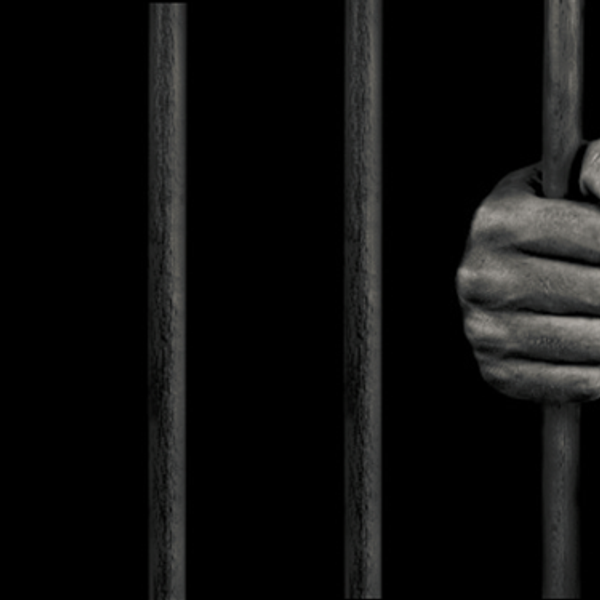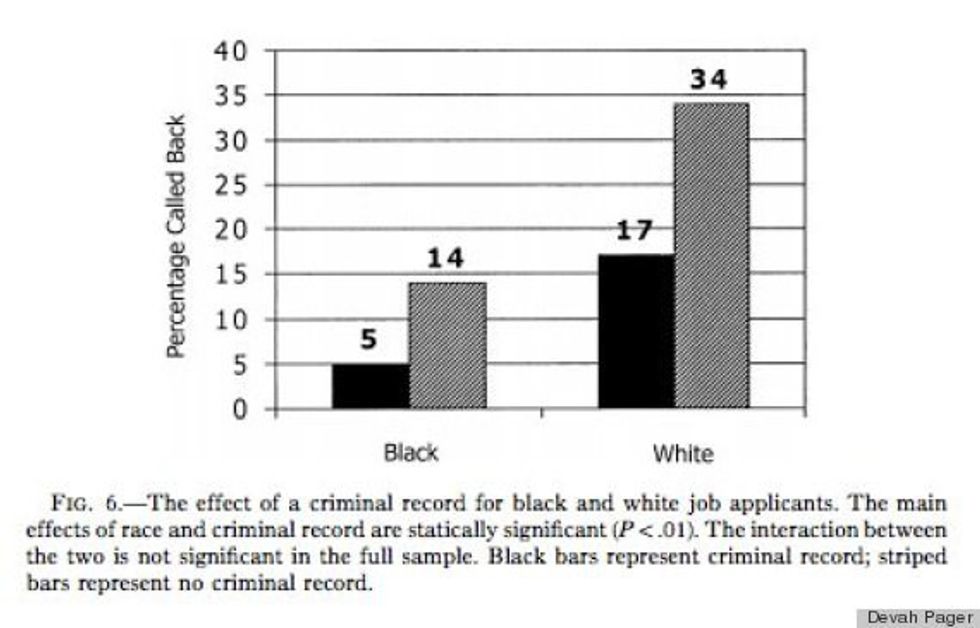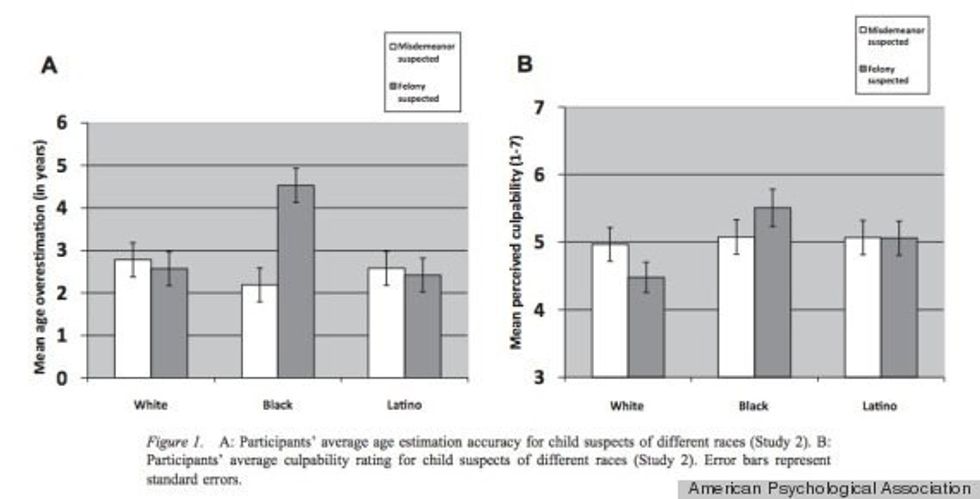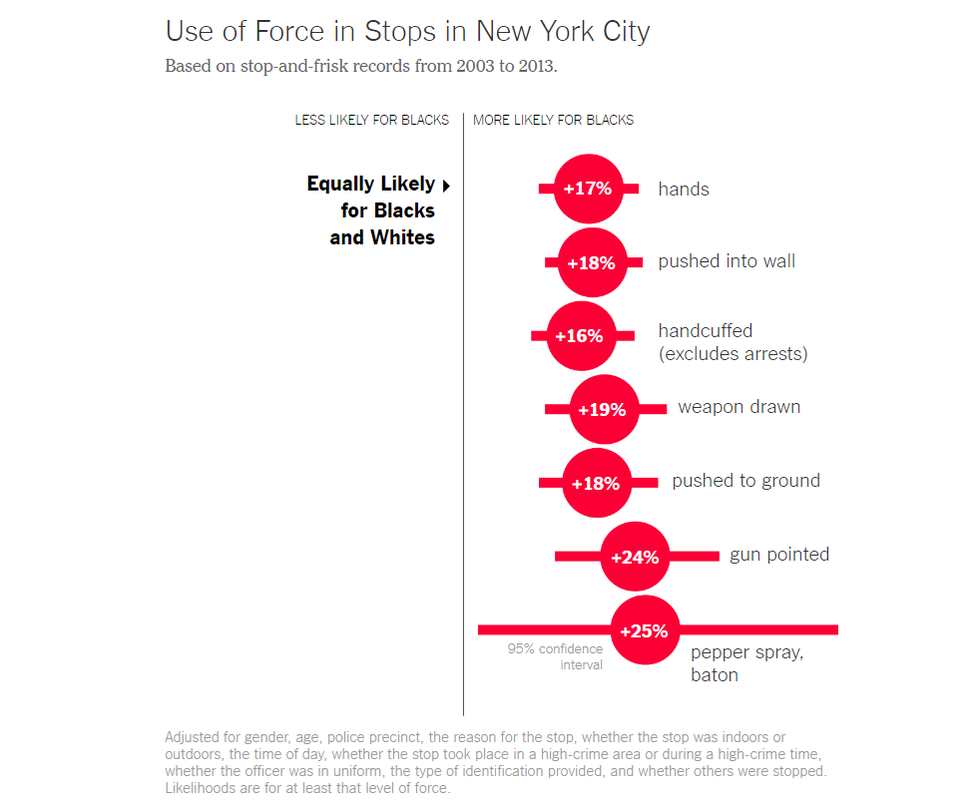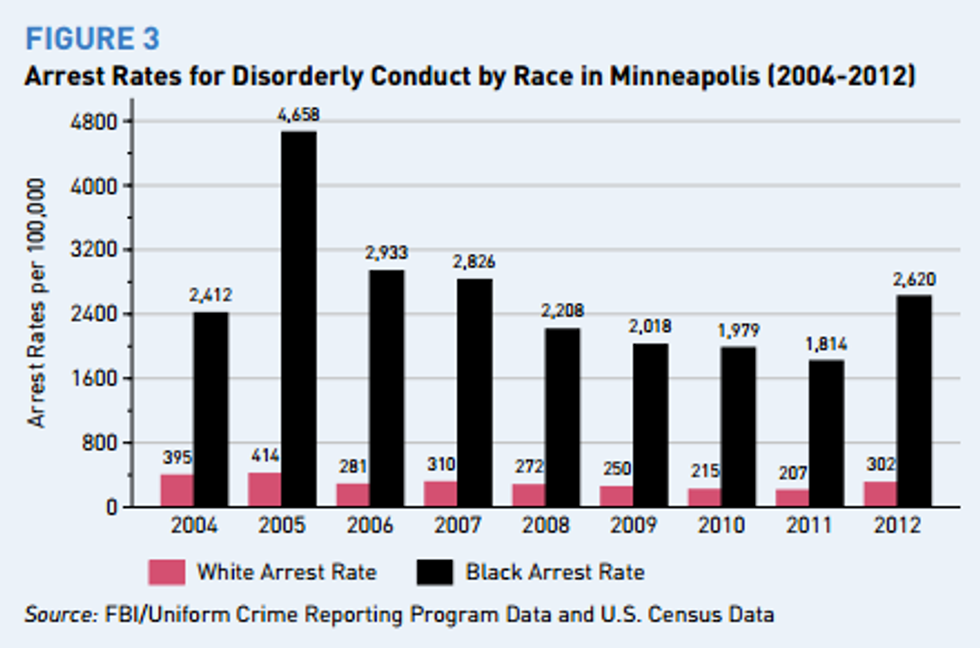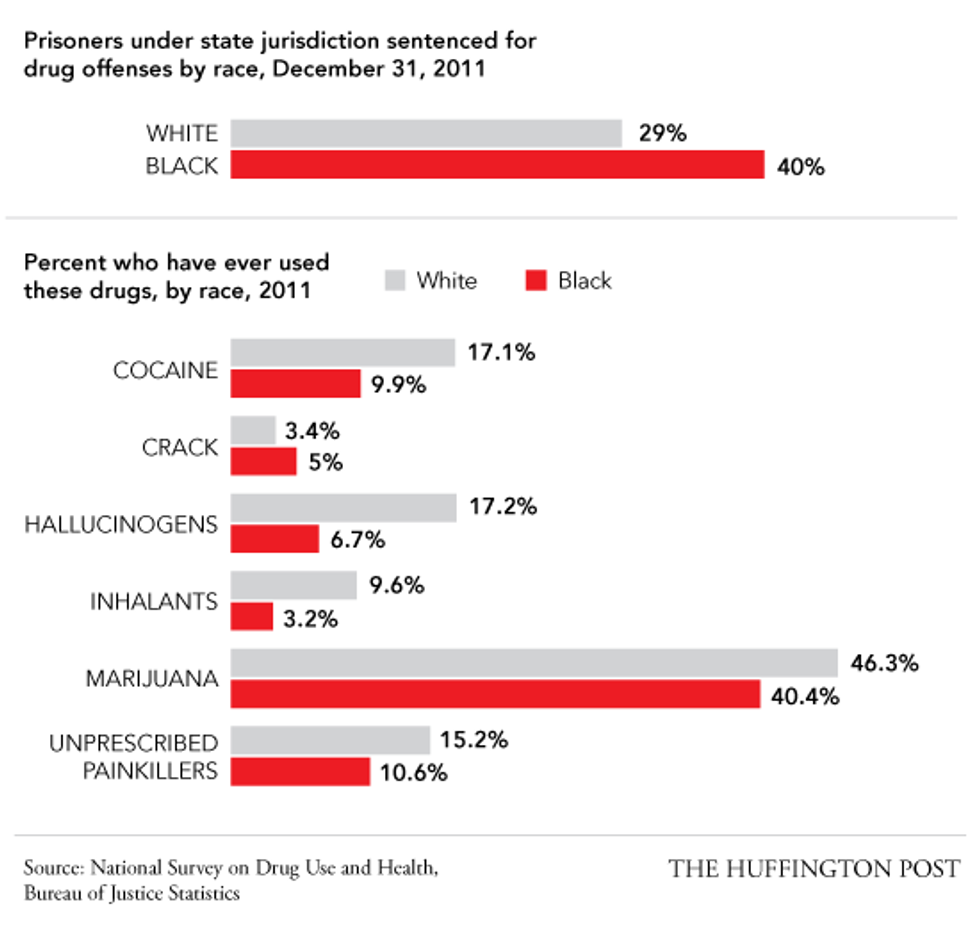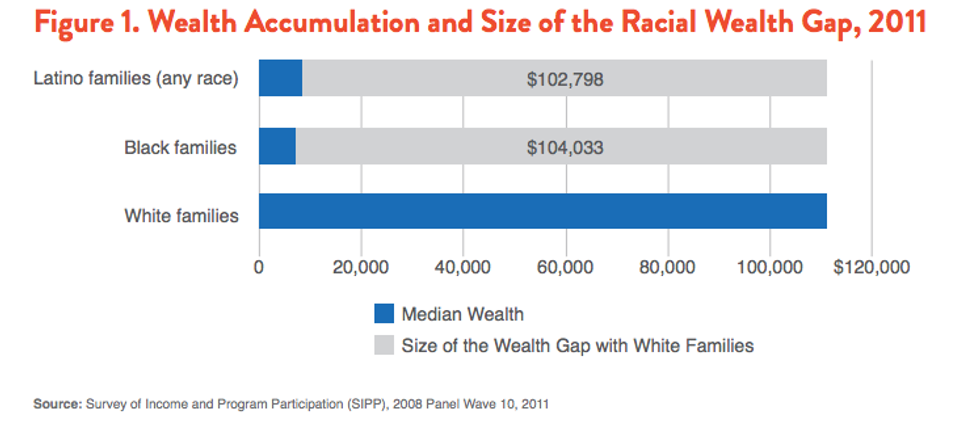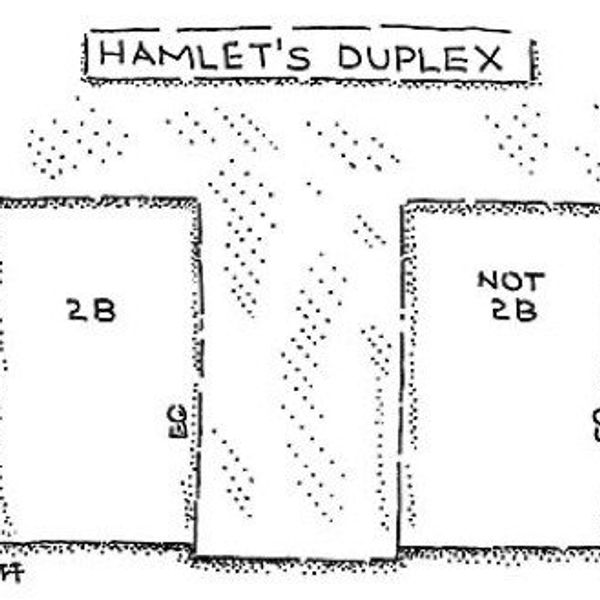Make no mistake, racism towards the Black community is alive and well in the United States. It no longer proudly wears the white robes of the KKK, but it still works in more insidious ways. Police officers, juries, teachers and the average white person rarely act with the intent to harm Blacks anymore. Lynchings, church bombings and other overt forms of violence (which rely on agency) against Black communities are largely a tactic of the past. Today, however, racism manifests itself in the institutions of America.
On CNN recently, retired NYPD detective, Harry Houck, claimed that there was no evidence that either the shootings of Philando Castile or Anton Sterling were motivated by racism. He was missing the point entirely. It might be reasonable to argue about whether or not the shooting of Michael Brown in Ferguson, Missouri, was racist. The same is true for Walter Scott in Charleston, South Carolina. Perhaps the death of Eric Garner in Staten Island, New York, was solely caused because he resisted arrest. Tamir Rice, the 12-year-old boy from Cleveland, was holding a toy gun after all. Philando Castile had a real gun on him.
At some point the excuses have to end. Obviously, officers in these situations do not respond with force because they want to kill Blacks. The point is that they overreact because they are subconsciously affected by media stereotypes, police department cultures, and other internal biases. The image of racism in America's police force departments is a bloody mosaic which grows with each new killing of an unarmed Black man. Up close, they look like isolated images, but take a step back and the bigger picture becomes evident.
It is obviously possible to question whether a single act is motivated by racism. Yet you cannot miss the forest for the trees. Statistics are the best tool for illuminating the discrepancies in how the races are treated in the United States. In most cases, they confirm the experience of Black men and women who actually have to face the consequences of marginalization.
Here are seven ways that racism still affects men and women of color.
1. Employers are less likely to hire job applicants with Black names.
According to a study by the National Bureau of Economic Research, job applicants with African American names have to apply to 50 percent more jobs to get a callback. Responding to 1300 posted job ads with 5000 resumes, the authors also discovered that lower quality resumes and criminal history had a disproportionately large effect on African Americans applicants.
A study by Times Higher Education confirmed the existence of racial bias in hiring practices in academia. Moderators gave 96 participants four equally strong CVs of two non-white and two white individuals. Photos were attached to the resumes. The 96 participants then needed to shortlist two, out of the four, for a post as a lecturer in health psychology.
Over 60 percent of white participants shortlisted two white candidates, and just over 6 percent put forward two non-white candidates.
2. Teachers use disciplinary measures on Black students far too often.
According to the U.S. Department of Education Office for Civil Rights, Black students of any age are three times more likely than white students to be suspended. 18 percent of preschoolers are black, but those 18 percent account for 50 percent of suspensions.
One contributing factor may be explained by an American Psychological Association study. The report details how Black children are considered older and less innocent than children belonging to other racial groups. For instance, the study discovered that "The [participants] overestimated the age of Blacks by an average of 4.5 years and found them more culpable than whites or Latinos, particularly when the boys were matched with serious crimes."
3. Police are significantly more likely to use force against African Americans.
A study by a Harvard professor for the National Bureau of Economic Research demonstrates that law enforcement, on balance, treat differently Blacks from whites. After combing through data from ten cities across the United States, the researchers found that police are often more likely to use lesser force of all kinds against Black civilians. These findings have been replicated by numerous other studies over the past few years.
The Ferguson report by the Department of Justice is one such example. Following the shooting of Michael Brown, the DOJ slammed the city of Ferguson for racist police tactics. The report details how "African Americans are 2.07 times more likely to be searched during a vehicular stop but are 26% less likely to have contraband found on them during a search." A broad statistical survey of the FPD's records revealed that "despite making up 67 percent of the population, African Americans accounted for 85 percent of FPD’s traffic stops, 90 percent of FPD’s citations, and 93 percent of FPD’s arrests from 2012 to 2014."
A report from an advisory body to the San Francisco District Attorney demonstrated racism in the San Francisco Police Department. While the Black community in the city makes up about 6 percent of the population, they account for 15 percent of those pulled over by the police for traffic violations. Even worse, during traffic stops, police officers far more likely searched African Americans and Latinos. Despite making up 15 percent of traffic stops, Blacks accounted for 42 percent of all non-consent searches.
Another report, from the Center for Policing Equity, concludes similarly to the NBER study. Nationally, African Americans are 3.6 times as likely as Caucasians to have force used against them by an officer.
4. Juries are prone to racist sentencing.
According to the United States Sentencing Commission, Black men receive sentences that are on average 20 percent greater than white men for the same or similar crime(s). This double standard makes sense when you consider that they are disproportionately unlikely to be on juries.
EJIs report, entitled “Illegal Racial Discrimination in Jury Selection: A Continuing Legacy," explains that "In some communities, the exclusion of African Americans from juries is extreme. For example, in Houston County, Alabama, 8 out of 10 African Americans qualified for jury service have been struck by prosecutors from death penalty cases. In Jefferson Parish, Louisiana, there is no effective African American representation on the jury in 80 percent of criminal trials.
Furthermore, according to a study by the Sentencing Project, Blacks are 38 percent more likely to be given a death sentence than white people for the same crimes.
The racism in the justice system precedes sentencing and includes the very charges levied against African Americans. According to a study done by the American Civil Liberties Union, African Americans in Minneapolis are far more likely to be charged for a number of crimes. Young Blacks in Minneapolis are over 16 times more likely to be arrested than a white kids for curfew violations or loitering. African Americans in the city are almost nine times more likely to be arrested than a White person for disorderly conduct, and around 7.5 times more likely to be arrested for vagrancy.
5. The war on drugs is biased toward incarcerating African Americans.
According to a report by Human Rights Watch, African Americans are typically arrested three times as often in the United States for drug related crimes.
This is despite the fact that African Americans smoke pot (and use other drugs) less than White Americans.
The ACLU study in Minneapolis demonstrated that Blacks in that city were close to 16.5 times more likely than whites to be arrested for possession of marijuana. The data is based on FBI Uniform Crime Report data from 2004 to 2012.
In San Francisco, police found drugs on around three-quarters of white city-goers searched, but only around one-third of African Americans searched.
6. Incomes of Black and Latino households are drastically lower than in White households.
A Forbes article points out that "In absolute terms, the median white household had $111,146 in wealth holdings in 2011, compared to $7,113 for the median black household and $8,348 for the median Latino household. (All figures come from the U.S. Census Bureau Survey of Income and Program Participation.)"
The Huffington Post underscores that "Black Americans held 2.7 percent of the country’s wealth, though they made up 13 percent of the population."
The gap in both incomes and overall wealth between races is stunning. Unsurprisingly, it is highly correlated to the unemployment rate.
According to a study by the Center for Economic Policy and Research, African Americans who were recent college graduates face unemployment rates twice those of recent White college graduates. Another survey by the Office for National Statistics’ Labour Force Survey, this time in the UK, concluded that minority graduates were 2.5 times more likely to be unemployed than White graduates in that country.
College degrees are even less useful for African Americans than those statistics imply. Forbes explains that "obtaining a bachelor’s isn’t enough for a black or Hispanic person to escape the racial wealth gap. The return on investment in college is much higher for whites than for blacks and Hispanics: A white family at the median sees a return of $55,869 from completing a four-year degree. A black family sees $4,846 and an Hispanic family $4,191."
College degrees are the key to obtaining access to higher income brackets in this country. Denied access from jobs even with degrees (and saddled with debt), Black students are less able to climb the ladder and grow their wealth.
7. Segregation still divides Americans of different races, both in schools and neighborhoods.
I suggest watching this clip from Fareed Zakaria GPS. CNN's Fareed Zakaria explains modern segregation more eloquently than I ever could.
A Brookings blog post highlights that "One in four black Americans and one in six Hispanics live in high-poverty neighborhoods, compared to just one in thirteen white Americans, according to a recent report by Paul A. Jargowsky for the New Century Foundation."
In addition, it points out that "The overlapping of racial and income segregation is clear in the inner city of Chicago. Most majority-white census tracts have fewer than 10 percent of families in poverty, while just over half of the majority-black areas have more than 30 percent of families in poverty."
A report by the United States Government Accountability Office, details how from 2001 to 2014, the percentage of K-12 public schools that had high percentages of poor Black or poor Hispanic students nearly doubled from 9 to 16 percent.
All of these issues are related and highly correlated. When unemployment goes up, so does segregation in major cities. The same stereotypes which cause the police to profile black men also cause juries to over-sentence them.
People of color are discriminated against in every sector of our society. That does not mean that every time an officer kills a black man, or a school administrator suspends a child of color, that they are being racist. Yet it does signify that we need to cast scrutiny on the decision making process of those with power. It is hard to tell sometimes what an individual was thinking when they pulled a trigger, but it is not difficult to see the mosaic of American racism when provided the right statistics.
John Cena once commented that "patriotism shouldn’t just be about pride of country... It should be about love. Love beyond age, disability, sexuality, race, religion and any other labels.”
Love for the United States implies admittance of its flaws. Only then will we have the courage to fight entrenched racism and make our country truly great.


